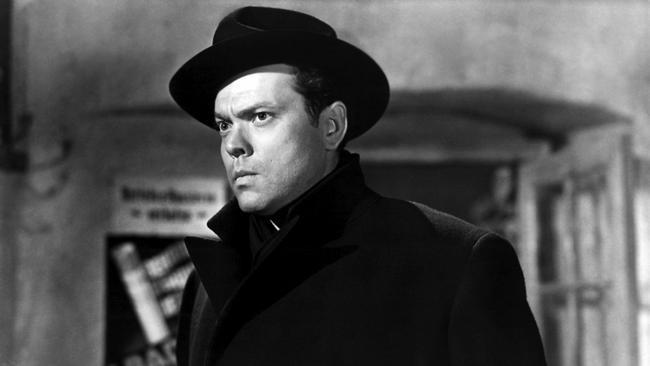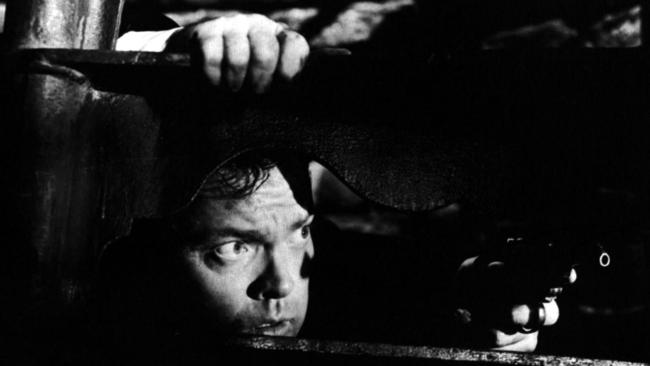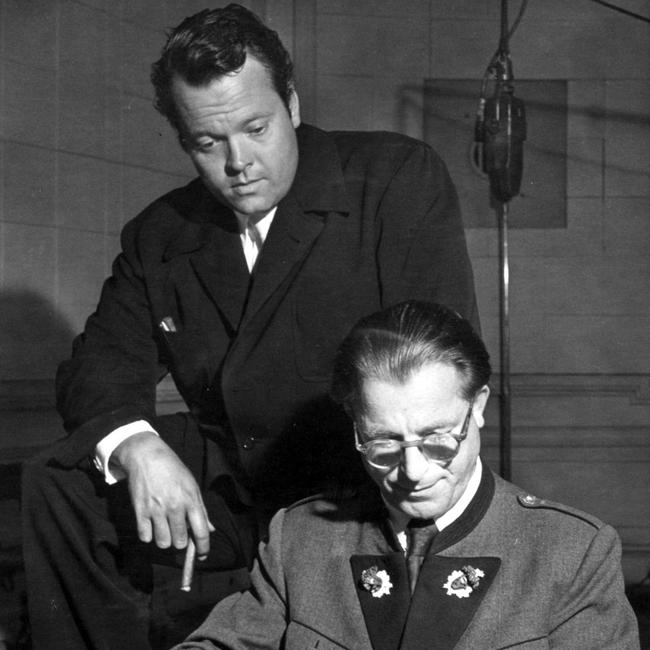The Third Man turns 75: film-noir style but with moral substance
Released 75 years ago, Carol Reed’s classic stars Joseph Cotten and Orson Welles in a profound, ravishingly shot story of human depravity in postwar Vienna.

Few films are as striking to look at or listen to as the British film noir The Third Man. Its shadow-soaked black-and-white palette, artfully askew camera angles and elaborately expressive editing offer constant visual stimulation, and its iconic score, featuring the distinctive sound of the zither, provides exotic accompaniment.
Yet the film’s ravishing surface is in service of a story of real substance: Released 75 years ago, The Third Man is a study of the human capacity for depravity, exploitation and avarice. In screenwriter Graham Greene’s unsparing vision, these vices are so intrinsic to our nature that they persisted even after the Allied victory of World War II, which is the film’s historical context. Director Carol Reed tells the tale with copious cinematic imagination, but his stylistic flourishes never overwhelm the underlying theme.
In a documentary-like prologue, Reed himself reads narration that initiates the viewer into the crumbling, corrupt condition of post-war Vienna, which, in his telling, is ostensibly overseen by various governmental powers but is actually a lawless free-for-all. “I never knew the old Vienna before the war with its Strauss music, its glamour and easy charm,” Reed dryly says. “I really got to know it in the classic period of the black market. We’d run anything if people wanted it enough – had the money to pay.”

Into this anarchic environment enters undistinguished, penurious American novelist Holly Martins (Joseph Cotten), who has been beckoned to Vienna with the prospect of a job by a longstanding friend, Harry Lime (Orson Welles). But no reunion is in the offing: Instead, Holly attends a funeral service for Lime, who, in a murkily recounted episode, is said to have recently lost his life in an accident.
After the funeral, Holly shares a drink with Major Calloway (Trevor Howard), a calm but tenacious Royal Armoured Corps officer who starts to provide an education in the activities of the supposedly deceased. We come to learn that Lime was a prodigious racketeer whose stock-in-trade was sought-after penicillin, which – to extend available doses and maximise his own profits – he diluted, with disastrous consequences for those in need.
Meanwhile, Holly becomes familiar with several of Lime’s associates and grows attached to a woman who once loved and now mourns Lime, Anna Schmidt (Alida Valli).
Throughout this long stretch, Reed seems to confirm Lime’s purported death by famously withholding any glimpse of Welles, whose inarguable influence on the movie is nonetheless felt in the presence of his longtime collaborator Cotten and in the ornate, stylised camerawork of Robert Krasker, whose photography earned him an Academy Award and owes a debt to Welles’s own films. Welles’s extended absence intensifies audience curiosity about the character’s alleged criminality.
Nothing that is said about Lime, however, can prepare the audience for the shock of catching sight of him – one of the most notable surprise appearances in any movie. In a series of shots perfectly timed to sustain suspense, Holly is seen sauntering through night-time Vienna. Detecting a presence in a shadow-obscured doorway, Holly taunts the nameless, faceless figure: “Come on out – come out, come out, whoever you are!” But before the man can, a nearby light is switched on and exposes his identity: It is Lime – a ghost shown to be flesh and blood. Anton Karas’s zither score is cued, and the camera dollies into a close-up of Welles, who, playing the moment for maximum ambiguity, cocks an eyebrow and beams with devilish delight.’

Here Reed taps his directorial arsenal to make a serious point: Yes, evil can appear banal, but it can also be charming and appealingly sphinx-like – as Welles himself is. We can comprehend Holly’s fascination with Lime, and Anna’s love for him, but the more we hear from the man himself, the less we are seduced. In a famous speech delivered while he peers down at the world from a Ferris wheel, Lime suggests the people below are, to him, an abstract concept – “dots” that can be dispensed with for the right price.
Then, in lines contributed by Welles himself, Lime insists free societies are incapable of greatness: In Switzerland, Lime says, “They had 500 years of democracy and peace, and what did that produce? The cuckoo clock”.
Yet, despite the clever dialogue and the undeniable grandeur of Welles’s persona, Reed succeeds in retaining the film’s moral perspective. In a shattering scene that humanises those “dots” of which Lime speaks, Major Calloway ushers Holly through a children’s hospital whose inhabitants include those injured by Lime’s diluted penicillin.
Near the end is a breathless chase in which Lime attempts to outrun the authorities in the Vienna sewer system – a sequence brilliant for its use of screen geography and sound, but also for its rich suggestion that it is only fitting for a man who operated in the “underground” of society to be cornered underground. The Third Man is not an exercise in style but a profound journey into a heart of darkness.
THE WALL STREET JOURNAL.






To join the conversation, please log in. Don't have an account? Register
Join the conversation, you are commenting as Logout